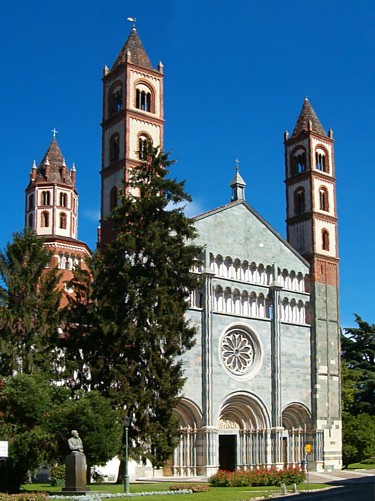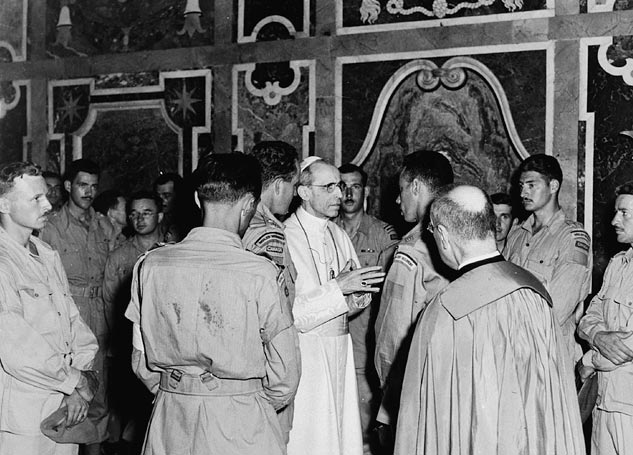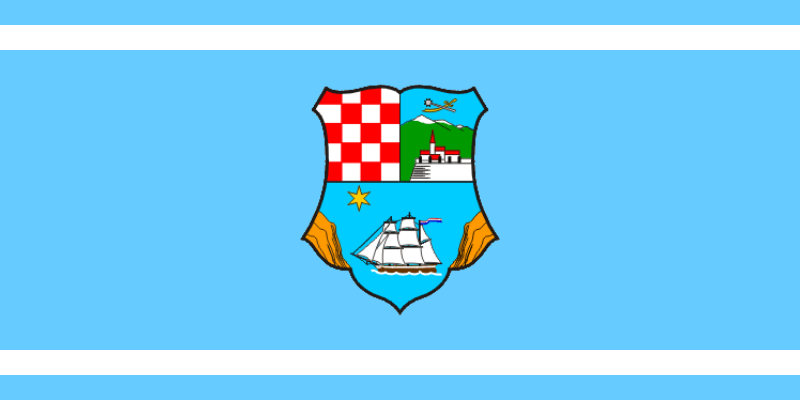|
San Valeriano, Robbio
San Valeriano is a Romanesque-style Roman Catholic church located on Via Francigena 43-95 in the town of Robbio, province of Pavia, Italy. History A church at the site is documented since the 12th century, when it was part of a Benedictine order Cluniac monastery which stood along the pilgrimage route to Rome, known as the Via Francigena. The monastery suffered much over the centuries; one inscription notes the monastery was destroyed in 1216. Built with brick, the church has three naves and the three apses ends in a typical Romanesque hemicycles. The monastery buildings are no longer extant. There are no remains of a former belltower, which was still present in the 16th century. The church is dedicated to St Valerian, a bishop martyred in Tunisia by Genseric in 460. The relics of this Pre-Schism western saint were putatively brought to Pavia Pavia ( , ; ; ; ; ) is a town and comune of south-western Lombardy, in Northern Italy, south of Milan on the lower Ticino (river), T ... [...More Info...] [...Related Items...] OR: [Wikipedia] [Google] [Baidu] |
Robbio
Robbio is a city and ''comune'' (municipality) in the Province of Pavia in the Italian region Lombardy, located about 50 km southwest of Milan and about 45 km west of Pavia. It is part of Lomellina traditional region. Robbio borders the following municipalities: Borgolavezzaro, Castelnovetto, Confienza, Nicorvo, Palestro, Rosasco, Vespolate. History The area of Robbio was settled since Neolithic times. A Roman centre name ''Redobium'' is attested by Pliny the Elder.''Naturalis Historia'', XIX,9 Later it was a Lombard town and, later, a possession of the Catholic diocese of Vercelli. Around the 11th century it was acquired by the De Robbio family, who ruled it, together with the neighbouring area, until the 13th century, when it was contended between Vercelli and Pavia. In 1220 the latter definitively acquired it through a diploma issued by Emperor Frederick II. Then part of the Duchy of Milan, it was entrusted to several feudal families. In 1748 it was acquired ... [...More Info...] [...Related Items...] OR: [Wikipedia] [Google] [Baidu] |
Italy
Italy, officially the Italian Republic, is a country in Southern Europe, Southern and Western Europe, Western Europe. It consists of Italian Peninsula, a peninsula that extends into the Mediterranean Sea, with the Alps on its northern land border, as well as List of islands of Italy, nearly 800 islands, notably Sicily and Sardinia. Italy shares land borders with France to the west; Switzerland and Austria to the north; Slovenia to the east; and the two enclaves of Vatican City and San Marino. It is the List of European countries by area, tenth-largest country in Europe by area, covering , and the third-most populous member state of the European Union, with nearly 59 million inhabitants. Italy's capital and List of cities in Italy, largest city is Rome; other major cities include Milan, Naples, Turin, Palermo, Bologna, Florence, Genoa, and Venice. The history of Italy goes back to numerous List of ancient peoples of Italy, Italic peoples—notably including the ancient Romans, ... [...More Info...] [...Related Items...] OR: [Wikipedia] [Google] [Baidu] |
Catholic Church
The Catholic Church (), also known as the Roman Catholic Church, is the List of Christian denominations by number of members, largest Christian church, with 1.27 to 1.41 billion baptized Catholics Catholic Church by country, worldwide as of 2025. It is among the world's oldest and largest international institutions and has played a prominent role in the history and development of Western civilization.Gerald O'Collins, O'Collins, p. v (preface). The church consists of 24 Catholic particular churches and liturgical rites#Churches, ''sui iuris'' (autonomous) churches, including the Latin Church and 23 Eastern Catholic Churches, which comprise almost 3,500 dioceses and Eparchy, eparchies List of Catholic dioceses (structured view), around the world, each overseen by one or more Bishops in the Catholic Church, bishops. The pope, who is the bishop of Rome, is the Papal supremacy, chief pastor of the church. The core beliefs of Catholicism are found in the Nicene Creed. The ... [...More Info...] [...Related Items...] OR: [Wikipedia] [Google] [Baidu] |
Romanesque Architecture
Romanesque architecture is an architectural style of medieval Europe that was predominant in the 11th and 12th centuries. The style eventually developed into the Gothic style with the shape of the arches providing a simple distinction: the Romanesque is characterized by semicircular arches, while the Gothic is marked by the pointed arches. The Romanesque emerged nearly simultaneously in multiple countries of Western Europe; its examples can be found across the continent, making it the first pan-European architectural style since Imperial Roman architecture. Similarly to Gothic, the name of the style was transferred onto the contemporary Romanesque art. Combining features of ancient Roman and Byzantine buildings and other local traditions, Romanesque architecture is known by its massive quality, thick walls, round arches, sturdy pillars, barrel vaults, large towers and decorative arcading. Each building has clearly defined forms, frequently of very regular, symmetrical ... [...More Info...] [...Related Items...] OR: [Wikipedia] [Google] [Baidu] |
Vercelli
Vercelli (; ) is a city and ''comune'' of 46,552 inhabitants (January 1, 2017) in the Province of Vercelli, Piedmont, northern Italy. One of the oldest urban sites in northern Italy, it was founded, according to most historians, around 600 BC. The city is situated on the Sesia River in the Pianura padana, plain of the Po River between Milan and Turin. It is an important centre for the cultivation of rice and is surrounded by rice paddies, which are flooded in the summer. The climate is typical of the Po Valley with cold, foggy winters ( in January) and oppressive heat during the summer months ( in July). Rainfall is most prevalent during the spring and autumn; thunderstorms are common in the summer. The languages spoken in Vercelli are Italian language, Italian and Piedmontese language, Piedmontese; the variety of Piedmontese native to the city is called ''Varsleis''. The world's first university funded by public money was established in Vercelli in 1228 (the seventh universit ... [...More Info...] [...Related Items...] OR: [Wikipedia] [Google] [Baidu] |
Roman Catholic
The Catholic Church (), also known as the Roman Catholic Church, is the largest Christian church, with 1.27 to 1.41 billion baptized Catholics worldwide as of 2025. It is among the world's oldest and largest international institutions and has played a prominent role in the history and development of Western civilization. O'Collins, p. v (preface). The church consists of 24 ''sui iuris'' (autonomous) churches, including the Latin Church and 23 Eastern Catholic Churches, which comprise almost 3,500 dioceses and eparchies around the world, each overseen by one or more bishops. The pope, who is the bishop of Rome, is the chief pastor of the church. The core beliefs of Catholicism are found in the Nicene Creed. The Catholic Church teaches that it is the one, holy, catholic and apostolic church founded by Jesus Christ in his Great Commission, that its bishops are the successors of Christ's apostles, and that the pope is the successor of Saint Peter, upo ... [...More Info...] [...Related Items...] OR: [Wikipedia] [Google] [Baidu] |
Abbazia Di S
Opatija (; ; ) is a town and a municipality in Primorje-Gorski Kotar County in northwestern Croatia. The traditional seaside resort on the Kvarner Gulf is known for its Mediterranean climate and its historic buildings reminiscent of the Austrian Riviera. Geography Opatija is located northwest of the regional capital Rijeka, about from Trieste by rail and from Pula by road. The city is geographically on the Istrian peninsula, though not in Istria County. The tourist resort is situated on the Kvarner Gulf, part of the Adriatic coast, in a sheltered position at the foot of Učka massif, with the ''Vojak'' peak reaching at a height of . census, the municipality had 10,661 inhabitants in total, of which 5,715 lived in the urban settlement. The town is a popular summer and winter resort, with average high temperatures of 10 °C in winter, and 32 °C in summer. Opatija is surrounded by woods of bay laurel. The whole sea-coast to the north and south of Opatija is rocky. Hi ... [...More Info...] [...Related Items...] OR: [Wikipedia] [Google] [Baidu] |
Benedictine
The Benedictines, officially the Order of Saint Benedict (, abbreviated as O.S.B. or OSB), are a mainly contemplative monastic order of the Catholic Church for men and for women who follow the Rule of Saint Benedict. Initiated in 529, they are the oldest of all the religious orders in the Latin Church. The male religious are also sometimes called the Black Monks, especially in English speaking countries, after the colour of their habits, although some, like the Olivetans, wear white. They were founded by Benedict of Nursia, a 6th-century Italian monk who laid the foundations of Benedictine monasticism through the formulation of his Rule. Benedict's sister, Scholastica, possibly his twin, also became a religious from an early age, but chose to live as a hermit. They retained a close relationship until her death. Despite being called an order, the Benedictines do not operate under a single hierarchy. They are instead organized as a collection of autonomous monasteries ... [...More Info...] [...Related Items...] OR: [Wikipedia] [Google] [Baidu] |
Cluny Abbey
Cluny Abbey (; , formerly also ''Cluni'' or ''Clugny''; ) is a former Benedictine monastery in Cluny, Saône-et-Loire, France. It was dedicated to Saints Peter and Paul. The abbey was constructed in the Romanesque architectural style, with three churches built in succession from the 4th to the early 12th centuries. The earliest basilica was the world's largest church until the St. Peter's Basilica construction began in Rome. Cluny was founded by Duke William I of Aquitaine in 910. He nominated Berno as the first abbot of Cluny, subject only to Pope Sergius III. The abbey was notable for its stricter adherence to the Rule of St. Benedict, whereby Cluny became acknowledged as the leader of western monasticism. In 1790 during the French Revolution, the abbey was sacked and mostly destroyed, with only a small part surviving. Starting around 1334, the Abbots of Cluny maintained a townhouse in Paris known as the Hôtel de Cluny, which has been a public museum since 1843. A ... [...More Info...] [...Related Items...] OR: [Wikipedia] [Google] [Baidu] |
Via Francigena
The Via Francigena (), also known as Francisca or Romea, is an ancient road and Christian pilgrimage, pilgrimage route running from the City status in the United Kingdom#Cathedral towns, cathedral city of Canterbury in England, through France and Switzerland, to Rome and then to Apulia, Italy, where there were ports of embarkation for the Holy Land. It was known in Italy as the Via Francigena ("the road that comes from France") or the Via Romea Francigena ("the road to Rome that comes from France"). In Middle Ages, medieval times it was an important road and pilgrimage route for those wishing to visit the Holy See and the tombs of the Apostles in the New Testament, apostles Saint Peter, Peter and Paul the Apostle, Paul. History of the pilgrimage to Rome In the Middle Ages, Via Francigena was the major pilgrimage route to Rome from the north. The route was first documented as the "Lombard Way", and was first called the ''Iter Francorum'' (the "Frankish Route") in the ''Itinerari ... [...More Info...] [...Related Items...] OR: [Wikipedia] [Google] [Baidu] |
Genseric
Gaiseric ( – 25 January 477), also known as Geiseric or Genseric (; reconstructed Vandalic: ) was king of the Vandals and Alans from 428 to 477. He ruled over a kingdom and played a key role in the decline of the Western Roman Empire during the 5th century. The murder of Roman Emperor Valentinian III, who had betrothed his daughter to Gaiseric's son Huneric, led the Vandal king to invade Italy. The invasion culminated in his most famous exploit, the capture and plundering of Rome in June 455. Gaiseric repulsed two major attempts by both halves of the Roman Empire to reclaim North Africa, inflicting devastating defeats on the forces of Majorian in 460 and Basiliscus in 468. As a result, the Romans abandoned their campaign against the Vandals and concluded peace with Gaiseric. Gaiseric died in Carthage in 477 and was succeeded by his son, Huneric. Through his nearly fifty years of rule, Gaiseric raised a relatively inconsequential Germanic tribe to the status of a major Med ... [...More Info...] [...Related Items...] OR: [Wikipedia] [Google] [Baidu] |
East–West Schism
The East–West Schism, also known as the Great Schism or the Schism of 1054, is the break of communion (Christian), communion between the Catholic Church and the Eastern Orthodox Church. A series of Eastern Orthodox – Roman Catholic ecclesiastical differences, ecclesiastical differences and Theological differences between the Catholic Church and the Eastern Orthodox Church, theological disputes between the Greek East and Latin West preceded the formal split that occurred in 1054. Prominent among these were the procession of the Holy Spirit (), whether leavened or unleavened bread should be used in the Eucharist, iconoclasm, the coronation of Charlemagne as Holy Roman Emperor, Emperor of the Romans in 800, the Pope's claim to Papal supremacy, universal jurisdiction, and the place of the See of Constantinople in relation to the pentarchy. The first action that led to a formal schism occurred in 1053 when Patriarch Michael I Cerularius of Constantinople ordered the closure of ... [...More Info...] [...Related Items...] OR: [Wikipedia] [Google] [Baidu] |




